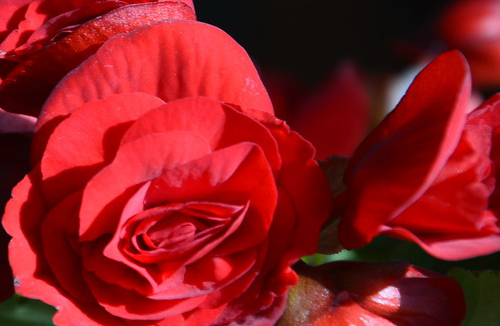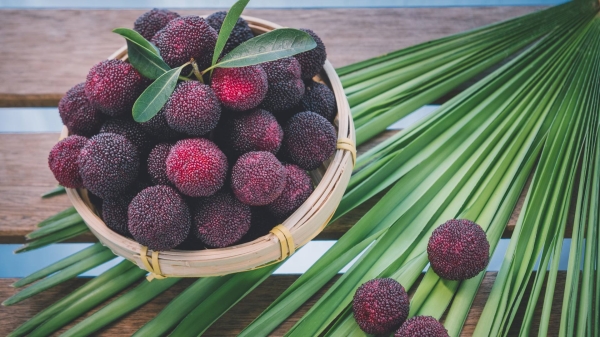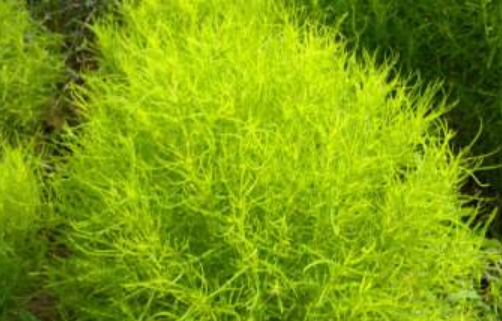How to raise Rieger Begonia
Soil
Rieger crabapple still has certain requirements on the soil, it likes loose, and drainage performance is better soil, this kind of soil we can configure according to the proportion, if it is inconvenient, you can go to a special florist to buy.

Temperature
Rieger Begonia likes warm growing environment, and the most suitable temperature for plant growth is between 18 ℃ and 22 ℃. The temperature in winter is too low, so we should pay attention to keep the plant warm. The growth temperature of the plant in winter should not be below 15 ℃, otherwise the plant may be frostbitten.
Light
Rieger Begonia is a plant that likes short sunshine. If the temperature is higher than 25 ℃ in summer, it needs to be shaded by at least 70%. By the end of October, the light is not so strong, which can increase the light of the plant. After mid-November, the days become shorter, so put the plant outside and let it receive enough sunlight to ensure that the plant grows and blossoms normally.
The above is about how to raise Rieger Begonia, let's take a look at what else we need to pay attention to!
How to raise Rieger Begonia for three years, I have some experience to share with you. The suitable temperature for growth and development of Rieger Begonia is 18 ℃ ~ 22 ℃. The focus of family conservation is to keep warm in winter, and the lowest temperature should not be lower than 15 ℃. As the winter Rieger crabapple is still in the growth and flowering period, it should be placed indoors facing south and sunny places, such as indoor windowsill and so on. But be careful not to get too close to the heater, so as not to burn the branches and leaves. When there is a high temperature lasting more than 28 ℃ in summer, cooling measures should be taken, such as putting it in an air-conditioned room or shading at noon. The watering basin soil should be kept moist, not dry and too wet; over-drying will lead to water loss and wilting, and in serious cases, the whole plant will die; the basin soil is too wet, and the water fills the soil void, resulting in serious anoxia, which affects root respiration and death; too wet basin soil is also easy to provide opportunities for the infection of fungal and bacterial diseases, thus affecting the ornamental value of Rieger Begonia. Rieger Begonia plastic pruning should be carried out during the growth period to promote the plant to germinate lateral branches in order to achieve plump plant type, and the excess buds should be removed in time so as not to cause a large amount of nutrient consumption and affect the development of other flowers. Diseases and insect pests ginger juice squeezed with water and sprayed at the proportion of 1:25 can control soft rot and other pathogenic spore germination. What I want to talk about in this paper is the author's cultivation experience under the condition of closed balcony in the north: first, the growth characteristics of Rieger Begonia under family conditions. Rieger Begonia is a perennial tuber herbaceous flower with brown lignified irregular corms underground. there are many fibrous roots in the lower part and branches in the upper part, which begin to bud in November every year, and the flowering period is as long as half a year. After June, the plants went into dormancy and semi-dormancy due to the hot weather. If you can safely spend the summer, after the Beginning of Autumn, with the gradual coolness of the weather, new branches will be drawn from the base of its branches to enter the next maintenance cycle. Second, the maintenance of Rieger crabapple under family conditions like warm, humid and semi-shady growth environment, afraid of high temperature and basin soil stagnant water, the most suitable growth temperature is 15 ℃-22 ℃, when it is more than 26 ℃, it does not grow well and gradually enters a semi-dormant or dormant state. The relative humidity of the environment should be more than 70% during the growth period and can not be shaded during the peak winter growth season. According to such some requirements, the potted flowers purchased from the market in winter can be directly placed on the windowsill of the closed balcony near the bedroom side, and the temperature, humidity and light can meet the requirements. Due to the change of transportation and cultivation environment, the newly bought potted flowers will produce withered leaves, fallen leaves and fallen flowers, which is inevitable. After more than half a month of maintenance, it will be improved and can be managed normally later. Water as soon as you see the soil turn white, about once every 3 days in Xi'an area. Rieger begonia is not fertilized during flowering. To May, gradually enter dormancy and semi-dormancy state, to gradually reduce watering, stop fertilization. After entering the summer, management and maintenance are more critical. First of all, it is necessary to cut off the residual flowers and withered leaves (but not the branches), move the potted flowers from the balcony to the cooler indoor windowsill, and strictly control watering, which is the key to safe summer. Many people think that withered leaves are caused by lack of water, but in fact, it is not because the temperature rises, root water absorption can not meet the needs of leaf water evaporation, water supply and demand is out of balance, and plants have to protect themselves, produce fallen leaves, and enter a dormant or semi-dormant state. to reduce the demand for water. At this time, if you increase the amount of water, so that too much water in the basin soil, the base of the branch is very easy to breed bacteria and rot, and then affect the internal tuber Rieger Begonia, the whole plant will die, so watering must be strictly controlled at this time. For example, a flowerpot with a caliber of 15 cm and a height of 13 cm infiltrates 30 ml of water from the bottom of the pot about every 10 days or so, so that the soil is in a state of micro-tide, so that the stem segments of the plant do not rot or local decay does not develop downward. As long as the edge of the leaf withered, but there are still a small number of young leaves growing slowly, it means that there is nothing wrong with the tuber, and the base of the stem segment is intact. In this way, when the weather turns cool in the Beginning of Autumn, the base of the plant begins to draw new branches. when it grows to a certain height, the old branch can be cut off with a sharp knife and the amount of water gradually increased. When the new branches are basically finalized, only 3 new branches are left and the rest are removed to concentrate nutrients and make the plant take shape as soon as possible. The new branches cut can be used for cutting. After October, the growth of the plant is accelerated, at this time, the basin soil should always be kept moist, and 0.2% compound fertilizer should be applied every half a month. As the purchased potted plant Rieger Begonia meets the requirements, the pot can not be changed in the first two years. How to raise northern Rieger crabapple? How do you raise Rigg crabapple?
Rieger Begonia is a rare greenhouse potted ornamental flower, which is often used for indoor cultivation. Rieger Begonia is very popular in the flower market in recent years, and its cultivation and consumption have increased sharply, so what are the breeding methods and precautions of Rieger Begonia? The following editor takes the northern region as an example to talk about the main points of its maintenance.
Rieger begonia is afraid of heat. If it exceeds 25 degrees Celsius, it will have poor growth. If it exceeds 28 degrees, it may enter thermal dormancy. In summer, you can put it in a place where the sun is out of the shade, and avoid rainforest and soil moisture, which can easily cause rotten roots. Acid-loving cultivation medium.
The normal growth of Rieger crabapple requires higher air humidity, which should be controlled at 65% and 80% during the whole growth process. Therefore, water should often be sprayed to the surrounding ground, and water curtains or automatic spraying systems can also be used to improve air humidity. Too high humidity is conducive to the prevalence of diseases, and too low is easy to cause plant dehydration and wilting, or even dry up and die.
In Jilin, the highest temperature is only 30 degrees. Generally put the indoor sunny windowsill, you can bask in more in winter. When the soil surface is dry, pour a little rain and snow water (because most of the soil and water in the north contain too much calcium and magnesium). But spray more water on the surrounding plants to create a moist environment. Occasionally add a small amount of nitrogen, phosphorus, potassium and trace elements to the water to prepare your own nutrient solution.
Lesson: a pot of pink flowers that enters the room after summer grows unusually luxuriantly. Because it is useless to see the top of the central branch (there are several strong branches in the lower part), cutting helps to reduce the height, make it more beautiful, and cut it off. But there was no disinfection and antiseptic treatment, and a few days later, it was found to rot rapidly. Hurriedly remove the rotten parts, smear streptomycin, and spray the whole plant. But it is too late, rotten for the most part, become a seedling.
adequate manuring
Fertilization should adhere to the principle of frequent application of thin fertilizer. The EC value of basin soil should not exceed 1.5, otherwise it is easy to cause fertilizer damage. The content and concentration of fertilizer depend on the growth status of different periods, the seedlings just put on the pot should apply thin liquid fertilizer based on nitrogen fertilizer for the first time, and the contents of N, P and K in fertilizer should be adjusted gradually with the growth of plants. balanced fertilization should be applied in the middle seedling stage, and then gradually increase the content of P and K fertilizer and reduce the amount of N fertilizer, so as to facilitate the transition from vegetative growth to reproductive growth. In the whole growth process, foliar fertilization should be carried out properly, which should be evenly sprayed on both sides of the leaves.
Shaping and pruning
Topping is the most important technique in shaping and pruning. After the fourth leaf of the plant unfolds, the terminal bud should be removed in time to promote the plant to germinate lateral branches in order to achieve plump plant shape. As Rieger Begonia is accompanied by the formation of flower buds in the seedling stage, the excess buds should be removed in time to reduce the extra consumption of nutrients, promote the vegetative growth of Rieger begonia and make the plant shape more neat and beautiful.
Florescence control
Rieger Begonia is a kind of quantitative short-day flower, that is, except for short-day treatment to induce flower bud differentiation, other growth periods need to grow in long-day environment. Generally speaking, the sunshine length should be greater than or equal to 16 hours. If the natural light length is not long enough (less than 16 hours), the method of replenishing light or interrupting the dark period should be taken to continue the vegetative growth of the plant. In order to make the flowering period of Rieger Begonia neat and consistent, short-day treatment was often adopted in production, that is, according to weather conditions, plant growth and different variety characteristics, dark treatment for 1-2 weeks was carried out to meet the needs of flower development.
Prevention of diseases and insect pests
The prevention and control of diseases and insect pests should give priority to prevention, and pesticides should be applied on time in the whole growth cycle, while paying attention to the scientific and rational use of pesticides and the regulation of the environment.
The diseases of Rieger Begonia mainly include stem rot and root rot. 25% carbendazim wettable powder or methyl topiramate 1000-fold solution can be used to control stem rot, or 20% chlorothalonil smoke remover can be used to fumigate the shed; streptomycin 1000-fold solution can be used to control root rot.
The main pests of Rieger Begonia are aphids, mites, thrips, etc., which can be controlled by spraying 1000 times of omethoate EC or 1.8% avermectin EC 2000 times.
Conclusion: the above is the knowledge about how to maintain Rieger Begonia. I hope it will be helpful to you.
- Prev

Can the white bugs in bayberry eat?
As the saying goes, "the Summer Solstice red bayberry is red all over the mountain, Lesser Heat red bayberry is going to be infested". Because red bayberry is nutritious and without pericarp protection, it has naturally become the main host of some insects. The white worms drilled out of bayberry are Drosophila larvae. The main components of these larvae are proteins, so they will not affect the human body.
- Next

Matters needing attention in the cultivation of skin
In the process of growing weeds, if they are not dealt with in time, many weeds will certainly grow around them. At this time, we need to clean up the weeds around the plants. We can weed them manually, by machines, by chemical methods, or by weeding without substituting for control and ecological control.
Related
- Fuxing push coffee new agricultural production and marketing class: lack of small-scale processing plants
- Jujube rice field leisure farm deep ploughing Yilan for five years to create a space for organic food and play
- Nongyu Farm-A trial of organic papaya for brave women with advanced technology
- Four points for attention in the prevention and control of diseases and insect pests of edible fungi
- How to add nutrient solution to Edible Fungi
- Is there any good way to control edible fungus mites?
- Open Inoculation Technology of Edible Fungi
- Is there any clever way to use fertilizer for edible fungus in winter?
- What agents are used to kill the pathogens of edible fungi in the mushroom shed?
- Rapid drying of Edible Fungi

